#wildernesssurvival
Link
The More You Know!
13 notes
·
View notes
Photo

Home can be anywhere you have a roof over your head, even for the night. Keeping the wind off your back, sun off your body and the rain or falling pine needles off your head while throwing a poncho or tarp over a bed of leaves or pine needles is all you need for. Good nights rest. Using a 10x10 tarp, bad a bed of pine needles and my sleeping bag with my @surviveoutdoorslonger Heavy Duty Emergency Blanket, @bdstacticalgear pack with Modular @nalgene Bottle Holders. #bushcraft #bushcraftgear #camp #camping #goodnightsleep #hiking #trekking #adventure #exploring #roughingit #primative #shelter #wilderness #hunting #wildernesssurvival #survival #bushcraftandprepping #huntingseason #shotshowmedia #shotshow https://www.instagram.com/p/CgiEMZ6PPBi/?igshid=NGJjMDIxMWI=
#bushcraft#bushcraftgear#camp#camping#goodnightsleep#hiking#trekking#adventure#exploring#roughingit#primative#shelter#wilderness#hunting#wildernesssurvival#survival#bushcraftandprepping#huntingseason#shotshowmedia#shotshow
15 notes
·
View notes
Text
A Plant That Could Save Your Life: Yarrow

Achillea millefolium (Yarrow) is said to have been named after Achilles who carried the plant into battle and used it to treat wounds. True about Achilles or not, it is hard to deny its long history in medicine.
Indigenous communities use it for a variety of reasons (such as treating fevers or burns), but the reason I wanted to bring it up is for the same reason as the reason Achilles may have carried it; saving lives.

Distribution map of Achillea millefolium courtesy of Plants of the World Online. Facilitated by the Royal Botanic Gardens
This wide-spread plant likes disturbed areas, has leaves that look like they have little feathers, and is a plant that people who love the outdoors should know. If you cut yourself badly and find some yarrow, crush or chew(if you are not allergic) the yarrow leaf and put it on your wound. Both historical and modern people swear that Yarrow has strong skeptic qualities, which means it could staunch excessive blood loss.
“I started to bleed profusely. Very fortunately for me, I had noticed where there was a patch of yarrow before I entered the woods so I ran back to it, picked a few leaves, chewed them in my mouth and placed this “spit poultice” on the wound. It stopped the flow of blood immediately. I was amazed and grateful, especially since I was in a remote area without further assistance.”
YARROW: A First-Aid Herb (Achillea millefolium)
It is important to note that I am struggling to find any articles backing up the styptic qualities of yarrow, but if you are going to bleed out, it certainly can’t hurt to try it. I did, however, find a study backing up claims that it can heal your wounds faster.
“Yarrow showed a considerable potential for wound healing possibly by accelerating the collagenation and proliferation phase of wound healing.”
Effect of Achillea millefolium Extract in Wound Healing of Rabbit
For liability reasons, I would not dare try to teach identification over a blog, but I do suggest you have someone teach you how to identify this amazing plant! It might just save your life someday.
Warning: In rare cases, people can allergic skin rashes. More possible risks here.
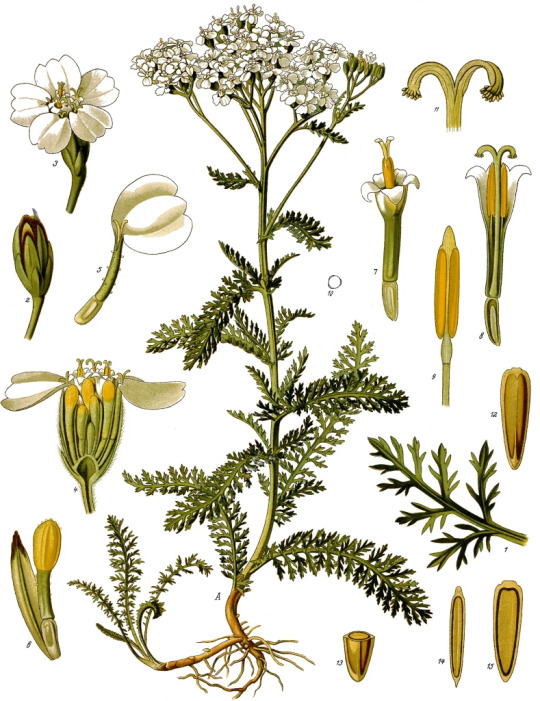
#WildernessSurvival#wilderness survival#outdoor survival#outdoors#wilderness#hiking#hike#hiker#hikingcommunity
4 notes
·
View notes
Photo

Learn Wilderness Tracking for Food, Rescue and Evasion:
Knowing how to track, to find a lost person or food source animal, may save a life but it can also help in evading an enemy. If you are the one seeking to be rescued (or being tracked), be sure that those who may seem to be your rescuers are actually your rescuers. Observe them for a period of time that satisfies you that their intentions are to your benefit and not to do you harm. Not all who find you are your rescuers so don't assume they are worthy of your trust.
Animals [Identifying Poop Tracks and Signs]
Humans: [Article 1] [Article 2] [Article 3] [Article 4]
Basic Search and Rescue Manuals: [Manual 1] [Publications]
How to track a person in the wilderness and avoid being tracked by a human
Related Links:
Electronic Tracking Devices to Find Your Stuff
SERE Training Tactics: Best Way To Turn Yourself “Invisible” On The Run!
Escape and Evasion: Surviving Kidnappings and Forced Captivity
[Reference Link]
[14-Point Emergency Preps Checklist]
[11-Cs Basic Emergency Kit]
[Learn to be More Self-Sufficient]
[The Ultimate Preparation]
#tracking2survive#tracking4food#tracking2rescue#SAR#rescueTracking#prepper#survival#survivalTracking#shtf#wildernessTracking#wildernessSurvival#prepping#prepare4tomorrow#survivalism#survivalist#bushcraft#camping#hiking
1 note
·
View note
Text
Lost Frontier Handbook: Navigating the Wild with Confidence

Introduction
In the vast expanse of the wilderness, the Lost Frontier represents both a challenge and an opportunity. For those willing to venture beyond the familiar, the Lost Frontier Handbook serves as a comprehensive guide to surviving and thriving in the untamed wilds. In this handbook, we delve into essential survival skills and techniques to equip adventurers with the knowledge and confidence needed to navigate the unknown.
Unlock the secrets of wilderness survival with the Lost Frontier Handbook
Understanding Survival in the Wilderness
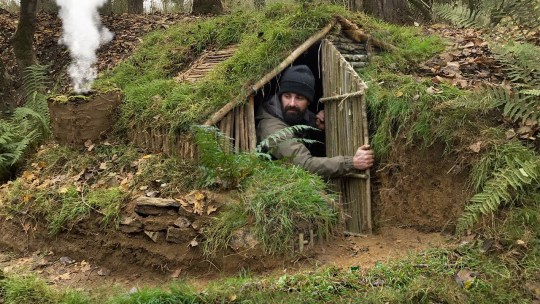
Assessing Environmental Risks
Before embarking on any wilderness journey, it's crucial to assess the environmental risks inherent to the terrain and climate. From extreme weather conditions to natural hazards such as avalanches or flash floods, understanding the potential dangers is the first step towards preparedness.
Basic Survival Needs
Survival in the wilderness revolves around meeting basic needs: shelter, water, fire, and food. By prioritizing these fundamental requirements, adventurers can increase their chances of survival and comfort in challenging environments.
Psychological Preparedness
The mental aspect of survival is often underestimated but is equally important as physical preparedness. Maintaining a positive mindset, staying calm under pressure, and adapting to unforeseen circumstances are essential traits for wilderness survival.
Unlock the secrets of wilderness survival with the Lost Frontier Handbook
Navigation Techniques

Using Natural Landmarks
Natural landmarks such as mountains, rivers, and distinctive rock formations can serve as reliable navigational aids in the wilderness. Learning to recognize and interpret these landmarks is a valuable skill for orienting oneself in unfamiliar terrain.
Navigating by the Sun, Moon, and Stars
In the absence of modern navigation tools, celestial bodies offer a timeless means of determining direction. Understanding how to use the sun, moon, and stars for navigation enables adventurers to find their way even on overcast days or during the night.
Utilizing Map and Compass Skills
Map and compass skills are indispensable for navigating with precision in the wilderness. Learning to read topographic maps, orient maps to the terrain, and use a compass to determine direction empowers adventurers to navigate confidently across diverse landscapes.
Shelter Building

Types of Natural Shelters
In the wilderness, natural materials abound for constructing shelters. Understanding how to utilize available resources such as branches, leaves, and rocks can result in sturdy and effective shelters. Examples include lean-tos, debris huts, and cave shelters, each suited to different environmental conditions and terrain.
Constructing Temporary Shelters
When faced with immediate shelter needs, improvisation is key. Techniques for building temporary shelters range from simple lean-tos fashioned from branches and foliage to more elaborate debris huts insulated with natural materials like leaves and grass. Adaptability and resourcefulness are essential for creating shelters that provide protection from the elements.
Insulating Techniques for Cold Environments
In cold environments, proper insulation is critical for maintaining body heat and preventing hypothermia. Insulating a shelter with materials such as leaves, pine needles, or snow can create a barrier against the cold ground and trap warmth inside. Additional layers of clothing and bedding further enhance insulation and comfort in chilly conditions.
Unlock the secrets of wilderness survival with the Lost Frontier Handbook
Water Sourcing and Purification

Identifying Safe Water Sources
Access to safe drinking water is paramount for survival in the wilderness. Knowing how to identify and locate reliable water sources such as streams, rivers, and natural springs is essential. Be cautious of stagnant water sources that may be contaminated with bacteria or parasites.
Purification Methods
Even seemingly clear water may harbor harmful pathogens invisible to the naked eye. Purification methods such as boiling, chemical treatment, or filtration remove contaminants and make water safe for consumption. Carrying a portable water filter or purification tablets is advisable for long-term wilderness excursions.
Water Conservation Techniques
In arid environments or during times of water scarcity, practicing water conservation techniques is crucial. Minimize water loss by collecting rainwater, using containers with tight seals, and employing efficient methods for cooking and hygiene. Every drop counts in the wilderness, and responsible water management is key to survival.
Firecraft

Building and Maintaining a Fire
Fire serves multiple purposes in the wilderness, from providing warmth and light to cooking food and signaling for help. Mastering the art of building and maintaining a fire involves selecting suitable tinder, kindling, and fuel, as well as employing proper fire lay techniques for optimal combustion.
Fire-starting Techniques
Various methods exist for igniting a fire without the use of matches or lighters. From friction-based techniques like the bow drill or hand drill to modern fire-starting tools such as ferrocerium rods or fire pistons, adventurers have a range of options for sparking flames in diverse conditions.
Safety Considerations
While fire is a valuable survival tool, it also poses inherent risks, particularly in dry or windy conditions. Practice fire safety by clearing a safe area for the fire, monitoring its size and intensity, and extinguishing it completely before leaving. Respect fire bans and regulations in sensitive wilderness areas to prevent accidental wildfires.
Unlock the secrets of wilderness survival with the Lost Frontier Handbook
Foraging and Wild Edibles

Identifying Edible Plants
The wilderness is teeming with edible plants rich in nutrients and flavor, but distinguishing between edible and poisonous species is paramount. Familiarize yourself with common edible plants native to your region, such as wild berries, edible greens, and nuts. Use field guides and reliable resources to accurately identify edible species and avoid potentially harmful ones.
Harvesting and Preparation
Harvesting wild edibles requires care and respect for the environment. When foraging, only take what you need and avoid overharvesting to preserve wild populations. Wash harvested plants thoroughly to remove dirt and contaminants before consumption. Depending on the plant, edible parts may need to be cooked or processed to neutralize toxins or enhance flavor.
Poisonous Plant Awareness
While many plants offer sustenance, others contain toxins that can cause illness or even death if ingested. Learn to recognize common poisonous plants in your area and avoid accidental ingestion. Look for warning signs such as distinctive leaf patterns, colors, or odors that indicate toxicity. When in doubt, err on the side of caution and refrain from consuming unknown plants.
Wildlife Encounters and Safety

Understanding Animal Behavior
Wildlife encounters are a natural part of wilderness exploration, but understanding animal behavior is crucial for avoiding conflicts. Learn to recognize signs of aggression or distress in animals and respect their space. Avoid surprising or provoking wildlife and be prepared to react appropriately in the event of an encounter.
Minimizing Wildlife Encounters
Prevent wildlife encounters by practicing proper food storage and waste disposal techniques. Keep food and scented items secured in bear-proof containers or hung from trees to deter curious animals. Make noise while hiking to alert wildlife to your presence and avoid surprising them at close range.
Responding to Threatening Situations
In the rare event of a threatening wildlife encounter, remain calm and assertive while backing away slowly. Avoid sudden movements or direct eye contact, as these may be perceived as threats. Use bear spray or other deterrents if available, and never attempt to approach or feed wild animals. Report aggressive behavior to local authorities to prevent future incidents.
Unlock the secrets of wilderness survival with the Lost Frontier Handbook
First Aid in Remote Environments

Basic First Aid Skills
In remote environments, access to medical care may be limited, making basic first aid skills essential. Learn how to assess and treat common injuries such as cuts, burns, sprains, and fractures. Carry a well-stocked first aid kit and familiarize yourself with its contents to respond effectively to emergencies.
Wilderness First Aid Kits
A well-prepared wilderness first aid kit contains essential supplies for treating injuries and illnesses in remote locations. Pack items such as bandages, antiseptic wipes, adhesive tape, pain relievers, and emergency medications tailored to your specific needs and activities. Regularly inspect and replenish your first aid kit to ensure readiness for emergencies.
Treating Common Injuries and Ailments
Be prepared to address a range of injuries and ailments that may occur during wilderness adventures. From treating minor cuts and blisters to managing more serious conditions such as hypothermia, dehydration, or allergic reactions, having the knowledge and skills to administer effective first aid is critical for ensuring safety and well-being in the wilderness.
Signaling and Rescue Techniques

Signaling for Help
In emergency situations, effective signaling can expedite rescue efforts and increase the chances of survival. Learn signaling techniques such as using mirrors, whistles, or brightly colored clothing to attract attention from search teams or passing aircraft. Create visible signals on the ground using rocks, branches, or contrasting materials arranged in patterns or symbols.
Building Emergency Shelters
Constructing emergency shelters is a proactive measure to improve visibility and aid rescuers in locating you. Build large, conspicuous shelters using natural materials such as branches, leaves, or snow to create contrast against the surrounding environment. Position shelters in open areas with good visibility and clear lines of sight to increase their effectiveness as rescue beacons.
Implementing Search and Rescue Strategies
In the event of becoming lost or injured in the wilderness, remain calm and focused while implementing search and rescue strategies. Stay in one location to conserve energy and increase the likelihood of being found. Use signaling devices, such as whistles or signal fires, to alert rescuers to your presence and communicate your location as accurately as possible.
Mental Resilience and Survival Mindset

Coping with Stress and Fear
Maintaining mental resilience in survival situations is essential for making sound decisions and overcoming challenges. Practice stress management techniques such as deep breathing, visualization, or mindfulness to stay calm and focused under pressure. Acknowledge and address fears or anxieties while maintaining a positive outlook on the situation.
Maintaining a Positive Outlook
A positive attitude can be a powerful asset in wilderness survival, providing motivation and resilience in the face of adversity. Focus on solutions rather than dwelling on problems, and celebrate small victories along the way. Cultivate gratitude for the beauty and opportunities present in the natural world, even in challenging circumstances.
Developing Adaptability and Resourcefulness
Adaptability and resourcefulness are key traits for thriving in unpredictable environments. Embrace change and uncertainty as opportunities for growth and learning. Stay flexible in your approach to problem-solving and be willing to improvise with the resources at hand to meet your basic needs and overcome obstacles.
Conclusion
Navigating the Lost Frontier demands a combination of knowledge, skills, and mindset to thrive in the face of uncertainty. By mastering essential survival skills, understanding wilderness dynamics, and cultivating a resilient mindset, adventurers can embark on wilderness journeys with confidence and readiness. The Lost Frontier Handbook serves as a comprehensive resource for those venturing into the unknown, providing guidance and inspiration for exploring the wild with courage and preparedness.
DISCLAIMER: This post contains affiliate links to promote the product.
#LostFrontierHandbook#WildernessSurvival#AdventureReady#OutdoorSkills#NatureExploration#SurvivalGuide#WildernessAdventure#ExploreTheWild#WildernessSkills#OutdoorAdventure#SurvivalTraining#OutdoorPreparedness#HomeDoctor#Doctor
1 note
·
View note
Text
10 Tips for Surviving Your First Outdoor Adventure
10 Tips for Surviving Your First Outdoor Adventure
Introduction Course to Wild Camping- Adventure Clinic
If you’re planning your first outdoor adventure, there are a few things you need to know to ensure a safe and enjoyable experience. Whether you’re going on a camping trip, a hiking expedition, or a wildlife safari, these 10 tips for Surviving Your First Outdoor Adventure will help you survive and thrive in the great outdoors.
Do Your…

View On WordPress
1 note
·
View note
Photo

Foraging for wild garlic can be a fun and rewarding activity, but it's important to be aware of the dangers lurking in the undergrowth. One plant to watch out for is the lords and ladies, also known as cuckoo pint or arum lily. While its distinctive leaves might resemble wild garlic, this plant is actually highly toxic, containing chemicals that can cause severe irritation to the mouth and throat, vomiting, and even death in extreme cases. So if you're out foraging, be sure to keep an eye out for this dangerous plant and steer clear! #foraging #wildgarlic #lordsandladies #cuckoopint #arumlily #toxicplants #poisonousplants #wildernesssurvival #outdooradventures #naturephotography #wildernessmedicine (at Cotswolds) https://www.instagram.com/p/CpXIC2WMg1V/?igshid=NGJjMDIxMWI=
#foraging#wildgarlic#lordsandladies#cuckoopint#arumlily#toxicplants#poisonousplants#wildernesssurvival#outdooradventures#naturephotography#wildernessmedicine
0 notes
Photo

Reposting with Christmas Wishes to @watches_in_nature Merry Christmas fam! Tell me what everyone got today that they you excited about. Hearing about that will be my present. My gift to you is this pic series of the Isotope Hydrium in the lovely snow laden scenery. Here’s a watch that has surprised me this year. I’ve been following Isotope’s journey for a while now & I have admired each release. As you all know, pics only convey so much, getting hands on with a watch is when you can truly admire it’s beauty. I was caught completely off guard by this watch and it’s quality. We all are tired of hearing that “punches above” bullshit. I’m tired of hearing it too. Let me say this though, this watch knocks the crap out of a lot of watches that cost 3-4x more. The bezel and crown function are flawless. The bezel sits completely flush against the case, all the way around the circumference of the bezel. That was a pet peeve of mine with the Rolex I owned. Every single bezel not only didn’t sit flush against the case, there would be a gap bigger on one side Vs the other between the bezel and the case. Don’t even get me started on the misalignment between the bezel marker and the 12H position. That’s not the case here with the Isotope. The bezel when returned to the top position, the marker lines up perfectly with the 12H position. So those are just some examples how this microbrand has better quality control than one of the biggest hype brands, in conclusion, that’s why I can say with all sincerity that this watch punches way above its asking price. Makes me sad that a large majority just accepts shit quality control just because a name on the dial is a hugely recognizable. A higher price tag doesn’t mean better quality. Have a wonderful day watch fam who celebrate this holiday & watchfam who don’t celebrate happy Sunday. 📸 @watches_in_nature #macrophotography #naturephotography #nature #bushcraft #bushcraftknife #bushcrafter #diverswatches #camplife #outdoorslife #adventurer #adventuretime #outdoorsman #adventure #watchaddict #watchfam #apocalypse #fieldandstream #wildernesssurvival #outdoorsurvival #badass #autumncolors #wanderer #hiker #winter #snow #christmas (at Christmas) https://www.instagram.com/p/Cmmauj4LOpz/?igshid=NGJjMDIxMWI=
#macrophotography#naturephotography#nature#bushcraft#bushcraftknife#bushcrafter#diverswatches#camplife#outdoorslife#adventurer#adventuretime#outdoorsman#adventure#watchaddict#watchfam#apocalypse#fieldandstream#wildernesssurvival#outdoorsurvival#badass#autumncolors#wanderer#hiker#winter#snow#christmas
0 notes
Text
#survive#survival#bushcraft#love#nature#life#survivor#survivalist#covid#tactical#thrive#live#hiking#survivalskills#survivaltips#wildernesssurvival#camping#prepper#adventure#survivalgear#survivalkit#bushcraftgear#bushcrafting#health#wilderness#knives#motivation#fight#survived#urbansurvival
0 notes
Text









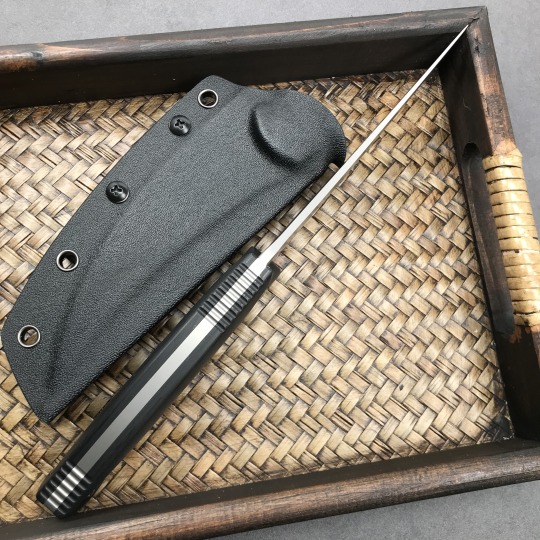

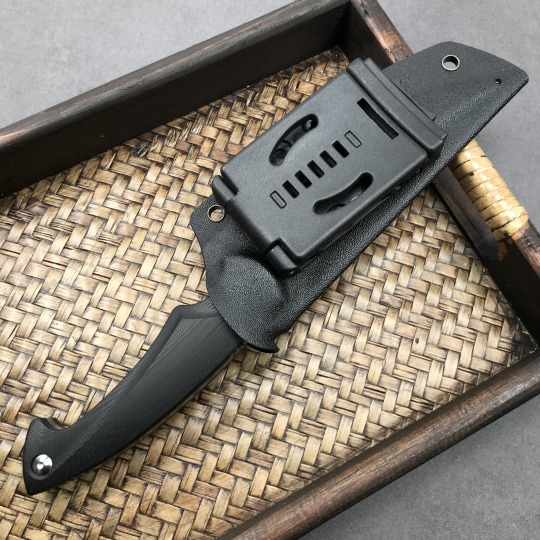
KUBEY KU231A Scimitar Hunting Fixed Blade Knife Black G10 Handle 5.4" Bead Blasted D2
[RAZOR SHARP BLADE] 5.4” Trailing Point D2 steel blade has excellent toughness, edge retention and wear resistance for lasting durability. The trailing blade is good for peeling, food prep, and cutting in tight places
[COMFORTABLE GRIP] Ergonomic G-10 handle with even finish, for sturdy and non-slip grip. G10 is favored for its high strength, low moisture absorption, excellent shock absorption and chemical reistance
[FULL TANG DESIGN] The KU231 features a full tang blade fixed in G-10 scales which is more safe and reliable than three-quarter or a half blade, and prevents from breaking in emergencies or heavy work
[PRODUCT DIMENSIONS] Total length: 10.4 inch, Blade length: 5.4 inch, Handle length: 5.0 inch, Blade thickness: 5.0 mm, Hardness: hrc59-61hrc, Knife weight: 0.53 lbs (240 g)
[CONVENIENT CARRY] Includes a high quality protective kydex sheath with snap fastener. The integrated belt loop allows you to carry the knife horizontally or vertically on your belt
Total length: 10.4" (264 mm)
Blade length: 5.4" (138 mm)
Handle length: 5.0" (126 mm)
Blade height: 1.4" (35 mm)
Blade thickness: 2.0" (5 mm)
Blade material: D2
Blade hardness: HRC59-61
Blade Finish: Bead Blasted
Blade type: Trailing point
Edge type: Plain
Blade grind: Western and flat
Handle material: G-10
Fixed way: Full Tang
Sheath Material: Kydex
Knife weight: 240g
Sheath weight: 3.9 oz. (111 g)
#kubey#kubeyknife#kubeyknives#Knifemaker#customknifemaker#customknife#knife#fixedblade#survivalknife#wildernesssurvival#knives#bushcraft#bushcraftknife#huntingknife#americanmade#veteranmade#knivesofinstagram#madeintheusa#trackerknife#bushcrafttools
0 notes
Photo

#camplife⛺️ @saput_ra1276 #leavenotraceprinciples #campfirecooking🔥 #cleanupafteryourself #carcampingadventures #wildernessexplorer #notsponsered #hikinglifestyle☀️🌲 #cherokee140 #wheretogoindubai #hicking #happycampers #wildernessadventure #mountainroadtrip #camping⛺️ #wildernesssurvival #centennialstate #leavenotrace #carcamping #myshot #yourshotphotography #getoutsideandlive #campingtrip #coloradoroadtrip #yourshot #1886 #survivalmode #campingwithdogs #loveeveryone❤️ #bushcraftskills Like Follow Tag official account Instagram: @bcpermadiofficial Facebook Page: @bcpermadiofficial Review & share photo/video di google profil kami👇 Google: BASECAMP PERMADI GUCI ㅤㅤㅤㅤㅤㅤㅤㅤㅤㅤㅤˢᵃˡᵃᵐ ʰᵃⁿᵍᵃᵗ ᵈᵃʳⁱ ᵏᵃᵐⁱ ㅤㅤㅤㅤㅤㅤㅤㅤㅤ꧁☆ 𝓟𝒆𝒓𝒎𝒂𝒅𝒊 𝓞𝒇𝒇𝒊𝒄𝒊𝒂ℓ ☆꧂ (di Campground Permadi Jungle) https://www.instagram.com/p/Cgt9dhDpJQW/?igshid=NGJjMDIxMWI=
#camplife⛺️#leavenotraceprinciples#campfirecooking🔥#cleanupafteryourself#carcampingadventures#wildernessexplorer#notsponsered#hikinglifestyle☀️🌲#cherokee140#wheretogoindubai#hicking#happycampers#wildernessadventure#mountainroadtrip#camping⛺️#wildernesssurvival#centennialstate#leavenotrace#carcamping#myshot#yourshotphotography#getoutsideandlive#campingtrip#coloradoroadtrip#yourshot#1886#survivalmode#campingwithdogs#loveeveryone❤️#bushcraftskills
0 notes
Photo

The @hultsbruk1697 Almike hatchet getting some work splitting some firewood for a fire over the weekend. It’s been a great hatchet getting the job done chopping and splitting wood on my solo trips. The @badger_claw_leather collar works great protecting the handle on those times I miss. #camping #campinglife #campingtrip #bushcraft #bushcraftgear #firewood #campfire #axe #hatchet #hultsbruk1697 #swedish #wilderness #survival #wildernesssurvival #wildernessculture #bushcraftandprepping #shotshowmedia #disconnect #badgerclawleatherworks https://www.instagram.com/p/Cl4reO3PEE0/?igshid=NGJjMDIxMWI=
#camping#campinglife#campingtrip#bushcraft#bushcraftgear#firewood#campfire#axe#hatchet#hultsbruk1697#swedish#wilderness#survival#wildernesssurvival#wildernessculture#bushcraftandprepping#shotshowmedia#disconnect#badgerclawleatherworks
2 notes
·
View notes
Text
Common Wilderness Survival Shelter Mistakes
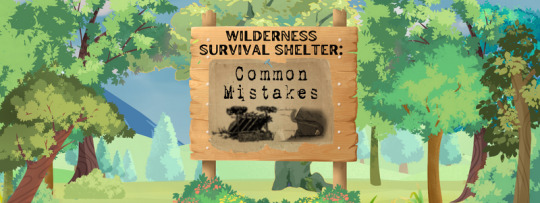
I used to be a wilderness survival instructor, so I thought I would make a list of all the mistakes I used to see.
Some of these are not technically mistakes, but instead skipped helpful additions, but I decided to include them as well.
1. It Is Built Too Tall
For some reason, people seem to think that they should be able to stand or sit inside all shelters. While this may be true for some, as a general rule, the more empty air in the shelter, the colder you will be. For a lean-to, have it no higher than the tallest person’s shoulder. For a A-Frame, have it no higher than your hip.
2. It Is The Wrong Shelter Type
A lean-to is great if you are in a group, but if you are alone and can’t get your fire lit, then it is not a good shelter for you in the winter. Instead, switch it for a A-frame or another shelter that will stay warm with your body-heat rather than depending on a fire.
3. It Has No Firewall
Some people in warmer climates don’t think a firewall really helps reflect heat, but once you get down to -30c, you will learn that they work.
A firewall is a wall you build on the opposite side of the fire from your shelter so that it reflects heat back towards you. As well as that, it will also help block wind.
4. It Is Too Wide
As a general rule, your shelter should be only just a tad bit longer than you are for the same reason as number 1. When selecting a spot, one technique is to lay on the ground where you want the shelter to be in order to see if it will fit properly.
5. No Lean-to Walls
Many survival teachers do not teach to build walls on the sides of a lean-to, but I always do. Not only will it help keep in heat and block wind, but the extra walls can make the sleeper feel more protected.
6. The Shingles Are Wrong
When people are adding branches to a shelter to act as shingles, many beginners start from the top and work their way down. If you do that, you risk directing the water into your shelter instead of away. Start from the bottom, then work your way up.
7. Moss For Bedding
I know there is nothing better than laying on a bed of moss, which is why there is a strong temptation to use it for bedding. The problem is that moss tends to release moisture at night, so you might wake up very wet and cold. As well as this, you do risk bringing insects into your shelter.
Instead, consider smoking the moss to dry it and remove insects. In the meantime, stick to other bedding.
8. Not Enough Shingling
A test that I learned is that if you go into your shelter and you can see any light leaking through the roof, you need to add more to it. If light can get in, than water can too and heat can escape.
9. Hole Shelters
With many situations(not counting snow or mound-shelters) digging your shelter into the ground could end up with you sleeping in a swimming pool. Soil holds onto moisture and leaks it out like a sponge, so even if your shelter is perfectly sealed up during a good rain, water can leak through the shelter inside. There are exceptions to this, but when in doubt, build your shelter above ground.
Once at survival-instructor camp, a group of men spent hours on digging out a firepit complete with dirt-chairs deep in the ground. It certainly looked nice when they went to bed, but they woke up to a rain-filled pool.
10. No Bedding
The ground is a heat-sapper. As Bear Grylls often says, “one layer below is worth two on top,” and he is very right. As well as helping to keep you warm, comfort is also important. You will need a good nights sleep in order to complete your tasks for the next day.
As a starter, you can just lay evergreen bows or something similar down as a bed.
11. No Trench
While you should build your shelter on a slight incline to direct water away from your shelter, trenches are also a commonly missed addition.
To prevent water from puddling into your shelter, dig a small trench around your shelter, and downhill away from it. Water will follow the easiest path, so this should keep you nice and dry.
#wildernesssurvival#survivalshelter#survivalshelters#survival shelter#survival shelters#wilderness survival#outdoor#outdoors#wilderness#bushcraft
0 notes
Text
The Ultimate Guide to Building a Lean-To Survival Shelter: Master Wilderness Survival in 5 Simple Steps
Discover the power of lean-to shelters for ultimate wilderness survival! Learn how to build and benefit from this versatile shelter in our latest article. #WildernessSurvival #OutdoorAdventure #LeanToShelterGuide
Introduction
In the vast expanse of the wilderness, where nature reigns supreme, having the knowledge and skills to construct a reliable and efficient shelter is paramount. Whether you are an outdoor enthusiast, a seasoned adventurer, or someone who simply seeks to learn the art of wilderness survival, this comprehensive guide is here to equip you with the essential techniques and insights to…

View On WordPress
#bushcraft shelter#debris hut#emergency shelter#natural materials#outdoor adventure#outdoor survival#shelter building#survival shelters#survival techniques#survival tips#survivalist#wilderness camping#wilderness safety#wilderness shelter#wilderness skills#Wilderness survival#wilderness survival essentials#wilderness survival guide#wilderness survival knowledge#wilderness survival mindset#wilderness survival preparation#wilderness survival skills#wilderness survival strategies#wilderness survival tactics#wilderness survival techniques#wilderness survival tips#wilderness survival training
2 notes
·
View notes
Photo
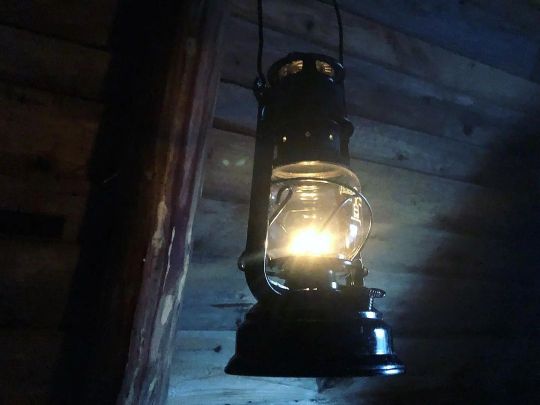
#Repost @nordicwilderness • • • • • • Dark times and the 276 Jet Black Is the perfect lamp in my camp! Check out the best outdoor / survival store! ➡️ @thegeneralprepper @nordicwilderness @thegeneralprepper @original.feuerhand #campnordic The classic among hurricane lanterns.The Feuerhand is manufactured in Germany for more than 100 years and has therefore gained cult status. Its sophisticated construction ensures economic kerosene consumption, enabling the Feuerhand to burn for about 20 hours with one tankful. More about Feuerhand 276 Jet Black The weatherproof hurricane lantern is particularly resistant to rust due to the galvanised material. Thanks to the heat-resistant glass cylinder, the flame is protected from wind and therefore burns evenly. The Feuerhand 276 hurricane lantern combines practicality and perfect design. The cold blast lantern is available zinc-plated and in several colours. The coloured models are zinc-plated and powder-coated. For your home and on the way, Feuerhand Baby Special 276 is the perfect lantern for terrace, garden and camping. #survival #prepper #survivalgear #survivaltips #camping #hiking #cabin #cabinlife #cabingear #oillamp #cabinlove #lantern #lanterns #forestlife #feuerhand #lamp #lamps #woodsmen #woodsman #cottage #cottagestyle #wildernesslife #wildernessculture #wildernesssurvival #Ukrainewillwin https://www.instagram.com/p/CkjReskoZbL/?igshid=NGJjMDIxMWI=
#repost#campnordic#survival#prepper#survivalgear#survivaltips#camping#hiking#cabin#cabinlife#cabingear#oillamp#cabinlove#lantern#lanterns#forestlife#feuerhand#lamp#lamps#woodsmen#woodsman#cottage#cottagestyle#wildernesslife#wildernessculture#wildernesssurvival#ukrainewillwin
3 notes
·
View notes
Text
We added #Survival and #Preparation Category
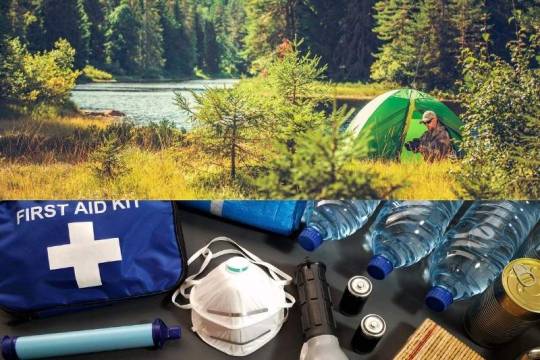
#survive #survival #bushcraft #love #nature #life #survivor #survivalist #covid #tactical #thrive #live #hiking #survivalskills #survivaltips #wildernesssurvival #camping #prepper #adventure #survivalgear #survivalkit #bushcraftgear #bushcrafting #health #wilderness #motivation #survived #urbansurvival
#dealchanger#dailydeals#weeklydeals#newonlineshop#onlineshopping#discounts#shoponline#shoppingonline#onlinestore#survival#prepper#camping
2 notes
·
View notes